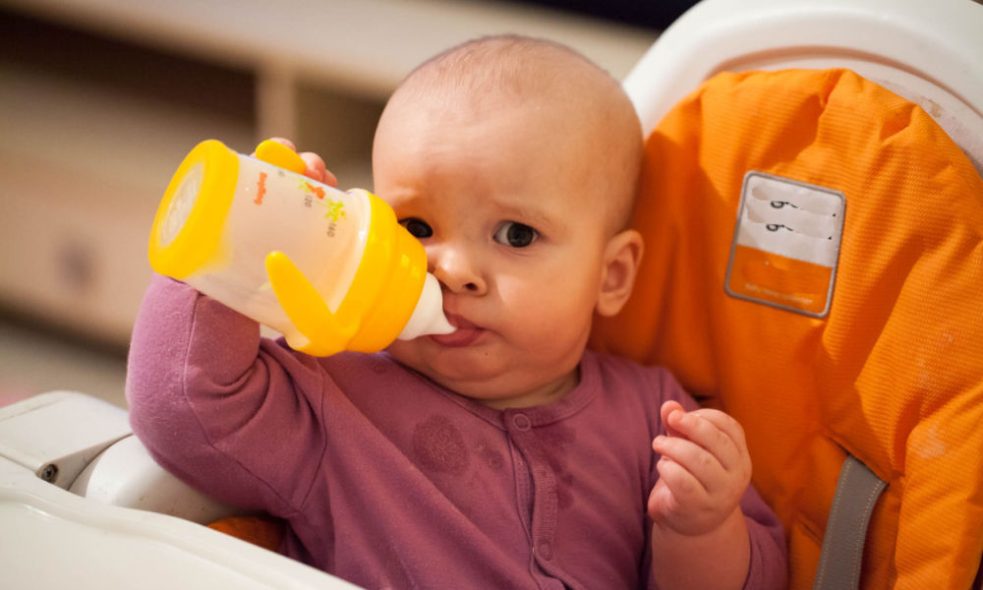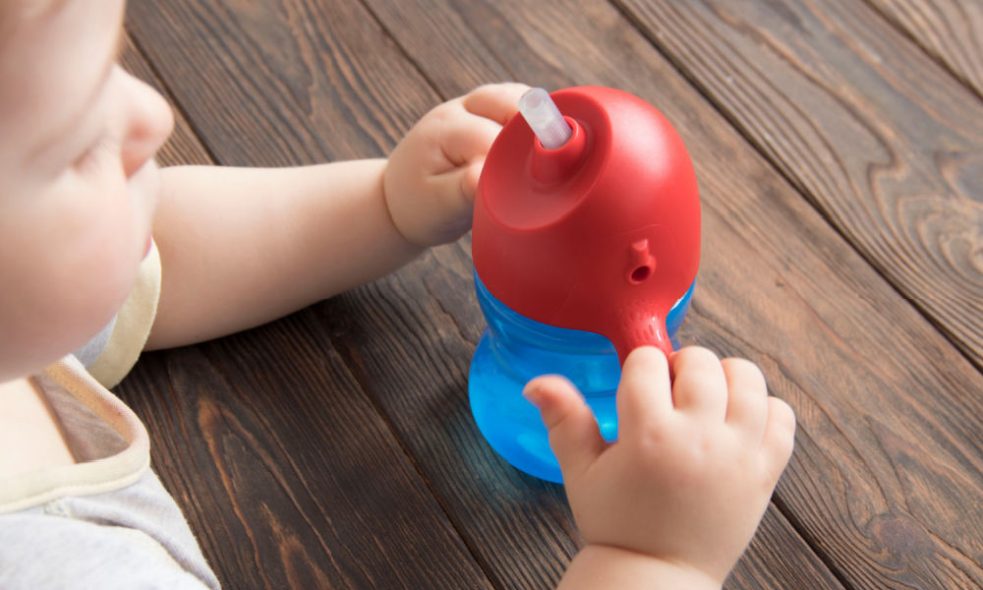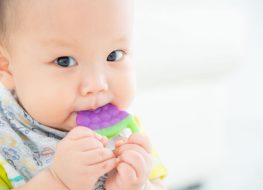
When do babies start using sippy cups? Parents always ask this critical question because waiting too long to start weaning your baby from the bottle or starting too early can have adverse long-term effects on their oral health.
If you’re wondering if the time is right for your baby to use sippy cups, here are four signs to watch out for and the best sippy cups to arm your baby with if you see them.
4 Signs To Know When To Introduce Sippy Cups
Pinpointing when your little one is ready to drink from a regular cup is tricky as it varies from child to child. However, baby healthcare specialists usually check for these four signs to know if you can start bottle weaning your baby.
The Right Age
While there is no exact age to wean your child, experts recommend starting when they are twelve months old. However, it’s also advisable to wean them slowly starting at six months. Weaning them earlier at a slower pace allows a smoother transition into sippy cup use than starting when they are a year old.
Teething
Teething is when your child begins developing teeth. It can be hard to tell when your baby begins teething since they’ll feel the symptoms even before their teeth emerge from their gums. It’s also another sign that your baby is ready for solid foods. Here are some signs your baby has begun teething.
- Drooling
- Tender gums
- Loss of appetite
- Chewing or gnawing on objects
- Irritability
Improved Motor Skills
Seeing your child pick up heavy things, like a regular cup or glass, or sit up straight on their own is a dead giveaway of their readiness for sippy cups. A child’s ability to hold things and sit up unassisted indicates the level of their motor skills. This is because there is a correlation between their motor skills and their ability to control the functions of their mouth.
If they can hold cups or sit on their own, then giving them a sippy cup is safe. Start with the lighter training cups and slowly transition to heavier cups.
They Can Eat Solid Foods
Parents usually introduce their children to solid food before they commit to bottle weaning. Feeding babies solid foods compensates for the lack of nutrients in baby formulas (for babies who are unable to drink breast milk) and prevents tooth decay from excessive bottle feeding. Learning how to eat solids also practices their oral motors and helps them drink on their own.

The Importance of Knowing When To Introduce a Sippy Cup
Timing is crucial to introducing a sippy cup—too early and you’ll hinder their development, while introducing it too late might leave them with long-term issues. Here are some health conditions that are closely related to overusing baby bottles.
Iron Deficiency Anemia
When a mother cannot provide breast milk for their baby, the usual alternative is baby formula. However, baby formulas aren’t enough to sustain a growing baby’s daily nutrition requirements. Eventually, prolonged bottle feeding will lead to iron deficiency anemia—a sickness common among bottle-fed toddlers.
Delays in Speech Development
Prolonged bottle feeding can also delay speech development for babies. This is because bottle feeding preoccupies a baby’s mouth with bottle nipples, leaving little room for development anywhere else. Babies who are bottle fed for too long will, in turn, grow up with speech impediments which they will later have to correct.
Tooth Decay and Crooked Teeth
Bottle-fed babies also exhibit problems with their teeth. Baby formula is known to be loaded with excess sugar that coats a child’s teeth, which can damage them. This is why when parents rely too much on the baby bottle, tooth decay is likely to emerge.
On the other hand, crooked teeth arise from bottle feeding and using pacifiers during the teething stage, which prevents a child’s teeth from growing naturally.
How Sippy Cups Prevent These Issues
Bottle weaning is the best answer for prolonged bottle feeding. This is because, unlike baby bottles, sippy cups and regular open cups are not detrimental to a baby’s growth.
For one, sippy cups do not affect the growth of a baby’s teeth. This is in contrast to bottle nipples that get in the way of their natural growth patterns and risk giving your child crooked teeth.
Another reason is sippy cups provide your child with a range of liquids to drink instead of just relying on breast milk or formula for their nutrition. This decreases the chance of tooth decay and gives them more nutrients to help them grow.
Lastly, sippy cups help develop a child’s oral motor skills. Unlike baby bottles, many sippy cups require more oral effort from babies to drink from, allowing them to exercise the muscles in their mouth and jaws, which help in speech.
What Kind of Sippy Cup Is Best?
Now, are sippy cups beneficial for toddlers? That’s a given. As long as your child is ready to drink their juice, by all means, give them the big kid cup. Just remember that not all sippy cups are created equal.
Soft Spouts
Soft spouted sippy cups are lighter sippy cups that have a spout on top made of food-grade silicone or another soft material. The soft spout assists babies in drinking juice since its flexibility allows babies to sip juice like they would using a baby bottle but to a lesser degree. These sippy cups can also be considered training cups since they are easier to carry and drink from.
Hard Spouts
If there is a soft spout sippy cup, there is a hard spout sippy cup. Hard spout sippy cups are heavier and harder to drink from. Since the presence of a hard spout prevents the sucking action to assist babies in drinking, they’ll have to raise the cup and tip it over to drink.
Hard spouts require improved motor skills and better oral functions. Switching to a hard spout is advised when a baby has had enough experience with soft-spouted sippy cups. Straw cups are also considered hard spouts since their straws are made of a more solid material.
Sippy Cup Lids
If you’re confident enough in your child, you can let them practice with a sippy cup lid slapped onto a regular cup. This can get them used to the feel and weight of a regular cup, with the sippy cup lid guarding the liquid to prevent spills and lessen the chances of an accident.
Spoutless Sippy Cups
Once you think your child is ready for real cups, try giving them a spoutless sippy cup. A spoutless sippy cup retains all the qualities of a regular cup, with a lid serving as a guard to prevent spills. Spoutless cups are harder to drink from, making it excellent practice for your baby.

Make the Right Choice, Choose Ashtonbee’s Silicone Sippy Cup Lids
Choosing a sippy cup is crucial to your child’s development. You’re not only choosing a tool for them but choosing a lifestyle that will affect their long-term development. That’s why Ashtonbee has provided you with the best sippy cups in the market.
Our silicone sippy cup lids are made from food-grade silicone and are completely safe for your child. Just slap them onto a cup and let your baby drink away. With Ashtonbee’s silicone sippy cup lids, your baby will give up the bottle in no time.
Get them here or through our Amazon store. Buy now!



